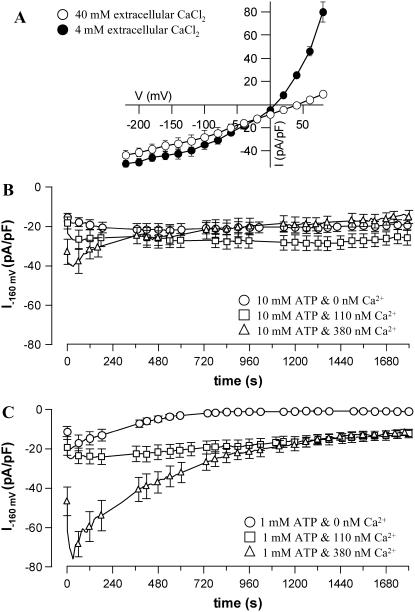Figure 6.
Ca2+-dependent activation of plasma membrane anion channels in guard cell protoplasts of N. tabacum. A, Cl−-induced shift in reversal potential of anion channels. The current-voltage relation was obtained with voltage clamp step protocols from a holding potential of −158 mV to a preconditioning voltage of +62 mV and test potentials ranging from +82 to −218 mV. Measurements were carried out with a pipette solution containing 10 mm ATP, 110 nm free Ca2+, and 150 mm Cl−. A change of the extracellular Cl− concentration from 80 to 8 mm shifted the reversal potential from 7.5 mV (se = 0.2, n = 4) to 41.3 mV (se = 3.5, n = 4). B and C, Kinetics of activation of anion channels in guard cell protoplasts after establishing the whole cell configuration (t = 0) with 10 mm ATP (B) or 1 mm ATP (C) in the pipette solution. The plasma membrane was clamped to −158 mV and Ca2+ was given via the patch pipette either at a free Ca2+ concentration of 0 (○), 110 (□), or 380 (▵) nm. Error bars represent se, n = 6 to 12. Note that at 10 mm ATP, 380 nm Ca2+ activates anion channels during the first 30 s, but the current decays to the same value as with 0 or 110 nm during prolonged measurements. At 1 mm ATP, 110 and 380 nm Ca2+ activate anion channels during the first 30 s and inhibit slow inactivation.

